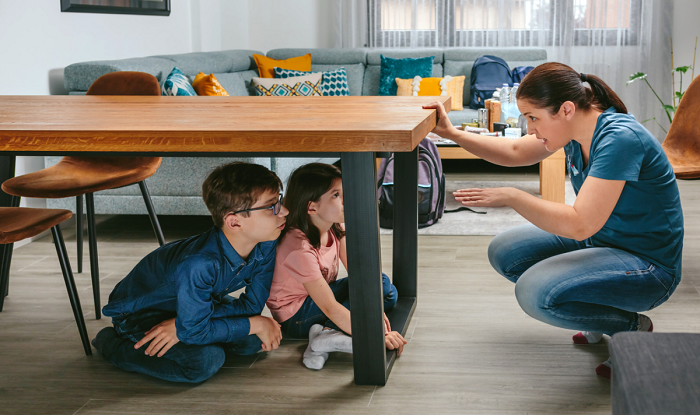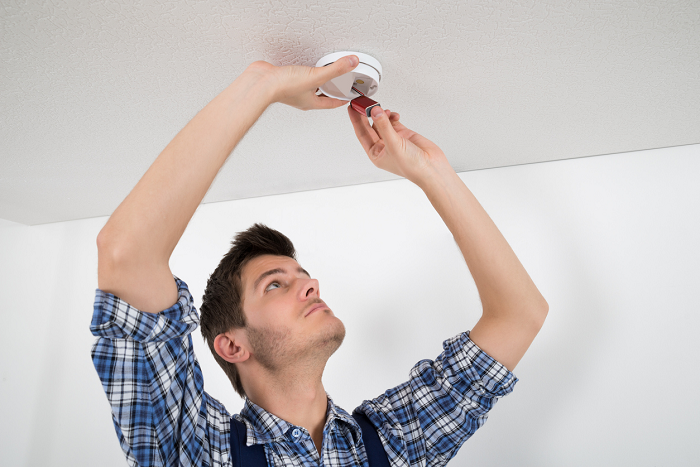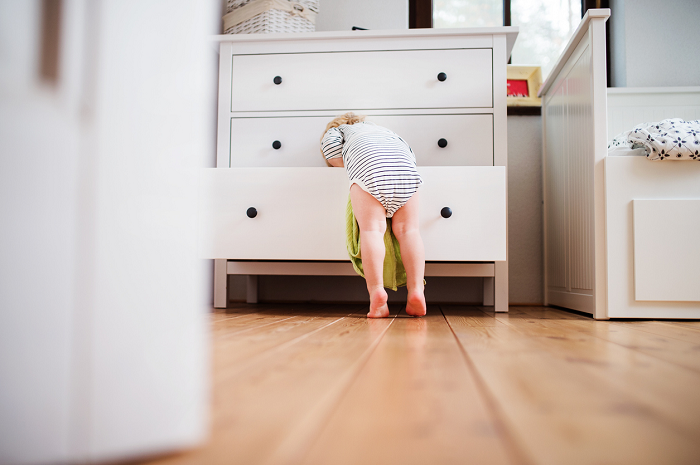How to Child-Proof Your Living Room (Our Best Tips and Tricks!)

Whether you're a new parent or you have just moved into a new house, it's important to keep your house safe for your children. Here are some of our best tips for child-proofing your living room.
Install Smoke and Carbon Monoxide Alarms

Smoke alarms have saved countless lives. It's best to have them on every floor and especially near the bedrooms. We also strongly urge you to install carbon monoxide detectors to alert you to this colorless, odorless—and deadly—gas.
As benign as this room looks, there are things to watch out for here, too.
Keep Your TV in a Safe Position
Television doesn't just addle a kid's brain. Believe it or not, it's also a frequent cause of injuries treated in emergency rooms. The scenario is simple enough: a toddler reaches up to a TV sitting on a cart, stand, or flimsy table and pulls it over on himself. Your best bet is to put the television on a low, stable piece of furniture, as far back against a wall as possible.
The DVD tape insertion slot is an enticing little compartment that kids love to stick things into. A child's fingers can be pinched in the slot (not to mention what foreign objects do to your DVD player!). If you have a DVD player, block the opening with a device made for this purpose, or keep it in a cabinet that can be closed.
Invest in Barriers and Fireplace Screens

Unless you live in a one-story house with no steps anywhere, you'll need gates to keep your child from becoming Humpty Dumpty. You'll also need barriers for decks, balconies, and other elevated sites.
A breakable, glass-topped coffee table is not a good idea in a home with young children for obvious reasons. Kids also have been known to pull over tall furniture, especially bookcases. Furniture is even more dangerous if it sits partially on a rug, or the floor is uneven. Anchor unstable furniture to the wall.
Fireplaces pose numerous hazards. Tongs and other tools can crush fingers or injure eyes. Keep these and fireplace matches out of children's reach. Never leave a young child alone in the room if there is a fire or hot coals in the fireplace, or if the fireplace doors are still hot. Even an unused fireplace is a hazard if a child crawls around it and breathes in the soot. Use a screen even if you have fireplace doors because they can become very hot. And teach your child to stay away from the fireplace.
Be Aware of Hazards in Every Room
These potential hazards are not unique to the living room; they're found in other rooms as well:
- Electrical outlets
- Electrical cords
- Cords from blinds or drapes
- Small objects that can be swallowed

To get a baby's-eye view of your house, get down on your hands and knees and crawl around. From there you can see a nail sticking out of the baseboard, a small object that rolled under the couch, or a lamp cord that your baby could pull on. You'll be surprised how many hazards you'll find—and thus be able to eliminate.
To a small child, the holes in an electrical outlet are tempting places to stick things. The result can be severe shock and electrical burns. Don't take chances: put child-resistant covers on all unused outlets. There are several types on the market, but it's best not to use the little plastic plugs with two prongs and a base that were popular a few years ago. It's been found that kids can sometimes pull them out and try to swallow them, posing a choking hazard.
Wall-mounted lights are safer than table lamps with cords that a crawling baby can pull over. There's also a risk of serious mouth burns if a child chews on an electrical cord. Try taping the cords to your baseboards or running them under furniture so they're out of reach as much as possible, but don't put the cords under rugs or nail them to a floor or wall because you could be creating a fire hazard. Unplug extension cords when not in use, and reduce the slack in cords being used by coiling the excess and securing it with a rubber band or string.
Keep window blind and drapery cords out of reach by wrapping them around a high hook. They're a strangulation hazard.
Crawlers and toddlers love to examine things with their mouths. Keep your floors free of small objects such as coins, paper clips, beads, or anything that a curious child might pick up and swallow. After you vacuum, carefully examine your floors for objects such as straight pins that the vacuum cleaner might have missed.